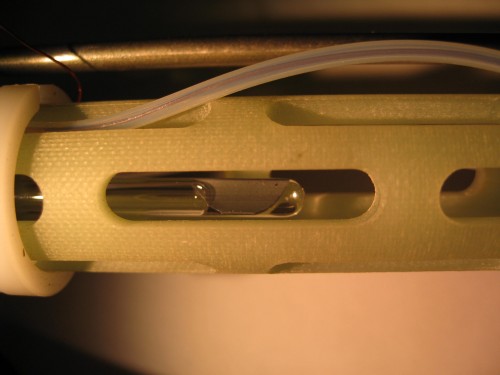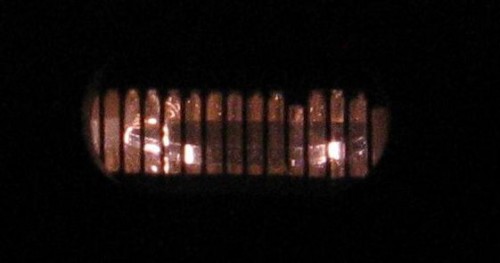
I have been watching hard drives and storage medium getting smaller and smaller over the years. The interesting thing is that they are not only getting smaller, they are using less energy, and storing more data. But holy crap! An international team of scientists recently performed the ultimate miniaturization of computer memory: storing information at the nucleus of an atom. The breakthrough is a key step in bringing to life quantum computers, devices based on the theory of quantum mechanics.
In the quantum world, objects such as atoms can exist simultaneously in multiple states–that is, they could literally be in two places at once, or possess a number of other seemingly mutually exclusive properties. Quantum computing is seen as a holy grail of computing because each individual piece of information, or ‘bit’, can have more than one value at once.
A bit is a fundamental unit of information, represented as a 0 or 1 in a normal digital computer. Putting bits together creates a code, which generates or processes information. However, a quantum bit, or qubit, could be both 1 and 0 at the same time. That means a single qubit has twice the power of a normal bit, and once qubits start interacting with each other, the processing power increases exponentially.
How to maneuver and control quantum bits of information has been a major focus of experimentation. Researchers have been testing ways to isolate a quantum bit from a noisy environment, protecting its delicate quantum information, while allowing it to interact with the outside world so that it can be manipulated and measured.
Supported in part by the National Science Foundation, a team of scientists reported a solution in this week’s issue of the journal Nature. The scientists were from Princeton University in New Jersey, Oxford University in the United Kingdom and the Department of Energy’s Lawrence Berkeley National Laboratory in California.

The team described a system that used both the electron and nucleus of a phosphorous atom embedded in a silicon crystal. Both the electron and nucleus behaved as tiny quantum magnets capable of storing quantum information.
Inside the silicon crystal, the electron cloud was more than a million times bigger than the atom’s nucleus, with a magnetic field a thousand times stronger. The size of the electron cloud made it well-suited for manipulation and measurement, but not so good for storing information because of electron instability. To overcome the problem, researchers moved the information into the nucleus where it survived much longer.
“Nobody really knew how long a nucleus might hold quantum information in this system,” said Steve Lyon, leader of the Princeton team. “With crystals painstakingly grown by the Berkeley team and very careful measurements, we were delighted to see memory times exceeding the threshold.”
The international team has demonstrated that information stored in the nucleus has a lifetime of about 1 3/4 seconds. This is significant because before this technique was developed, the longest researchers could preserve quantum information in silicon was less than one-tenth of a second. Other researchers studying quantum computing recently calculated that if a quantum system could store information for at least one second, error correction techniques could then protect that data for an indefinite period of time.
“The electron acts as a middle-man between the nucleus and the outside world,” said John Morton, a research fellow at Oxford’s St. John’s College. “It gives us a way to have our cake and eat it–fast processing speeds from the electron, and long memory times from the nucleus.”
2 thoughts on “Storing Information At The Nucleus Of An Atom”
Comments are closed.